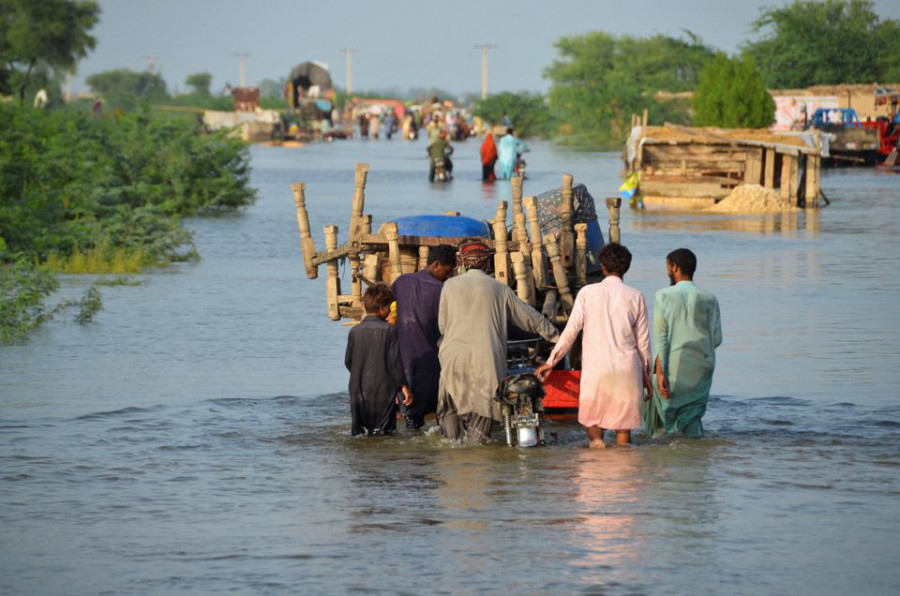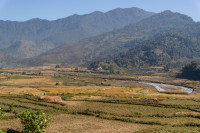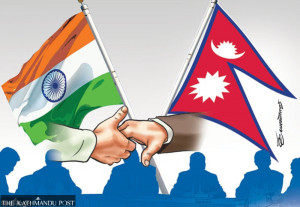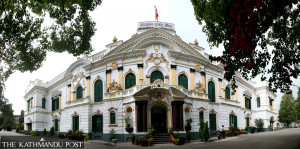Columns
Climate inaction and policy failures
The floods that ravaged Pakistan are a consequence of unanswered global wakeup calls.
Madhukar Upadhya
The agony and destruction wrought by the apocalyptic floods that ravaged Pakistan in August has unfortunately painted a ghastly picture of the devastation. The unprecedented scale of the flood, in comparison to previous floods of 2010 which covered about one-fifth of the country, has killed approximately 1,400 and displaced another 33 million people. A total of 670,328 houses and nearly 19,000 schools were damaged or destroyed. About 810,000 hectares of crops were affected. Thousands of kilometres of roads and other vital infrastructure were also damaged or destroyed, making even rescue and relief operations an overwhelming task. Pakistan will need tens of billions of dollars to rebuild these damaged infrastructures and lost livelihood bases.
As rescue and relief operations continue to be hindered by a lack of infrastructure and continued rain, rising cases of waterborne diseases have been a major concern as well. More than 134,000 cases of diarrhoea and 44,000 cases of malaria have already been registered. Furthermore, about 650,000 pregnant women are among the victims, of whom 73,000 don't have access to health services and are expected to give birth next month. In summation, it's truly a humanitarian crisis. Under these circumstances, with no guarantee that similar floods won’t repeat in the future, what should be the way forward?
Rareness of the event
A striking feature of the flooding this year is that it has affected areas that don't normally get such torrential rain, including the arid or semi-arid southern regions of Sindh and Baluchistan. In June, Pakistan suffered severe heat waves. Temperatures in the city of Jacobabad reached 51 degrees Celsius. According to scientists at COMSATS University, Islamabad, and the University of Melbourne, Australia, the heat waves coincided with another extraordinary event, a system of intense low pressure in the Arabian Sea that brought heavy rain to the coastal provinces, exacerbated by the early arrival of the monsoon bringing three times more rain that wetted a large area for a prolonged period. The southern provinces of Sindh and Baluchistan received more than five times the rain than the average of the past 30 years. Additionally, Pakistan has more than 7,200 glaciers, which are melting fast. A preliminary assessment suggests that the monsoon rains and melting glaciers combined caused the massive floods.
Embankments, roads and irrigation canals stopped the flood water from receding fast enough leading to severe damage. Hundreds of kilometres of roads and protection embankments built 10 to 20 feet above the land level have no culverts and/or gates, except for major channels, to allow flood waters to pass through. Large areas in urban centres, which are surrounded by elevated roads built higher than the settlements restricting drainage for storm water, have been submerged. In fact, restricted drainage was identified as a major problem in making floods more damaging in Pakistan when Karachi saw its worst floods in a century in 2020.
The Pakistan event is certainly not the last one of its kind. This occurred when global temperatures increased by only 1.2 degrees Celsius. Any further increases in temperature would bring more devastation. So, what's the lesson for us here?
While Pakistan is grappling with the flood havoc with limited resources and institutions stretched to their limits, the question that lingers in people's minds is: Is this the beginning of an era of the devastating impacts of climate change that scientists have been warning us of in every successive report? Will we face a similar deluge in other parts of South Asia, including Nepal, more frequently?
A cursory glance would suggest that since Nepal is far away from the sea, the direct impacts of such intense low pressure, should they occur more frequently, may not be as severe. Therefore, floods will be less ferocious than what we saw in Pakistan. Heat waves are less likely to be as harsh because of our mountainous terrain. However, the possibility of melting glaciers combined with monsoon rain cannot be ruled out. Besides, we've also built embankments to protect settlements and villages on the banks of rivers. Expanding urban areas and infrastructure development have encroached on the flood plains of almost every river and have already been making every flood increasingly more damaging. Water logging, caused by embankments, has been common and more frequent, especially along the southern border where raised structures built by India block flowing water. Unfortunately, most climate models project increased precipitation especially in the Himalayan region due to higher temperatures; the concern being that we have a poor understanding of the consequences of such an increase.
New uncertainty complex
We're already wrestling with other dire issues, from economic slowdown to rising food prices to shrinking income sources and an energy crisis making climate consequences more complex. The norms and institutions we used to rely on for prosperity and progress are proving to be no match for the interacting layers of emerging uncertainties as laid out in the recently published UN’s Human Development Report 2021-22. The report describes the “new uncertainty complex” primarily caused by dangerous planetary changes instigated by the Anthropocene and the sweeping societal transformations therein. With the new uncertainty complex, we also face unknown challenges and tougher questions without easy solutions. As with the Covid-19 pandemic which caught us by complete surprise, we have even less of an idea of how to live in a world of a new uncertainty complex.
Fortunately, the report provides a silver lining. It offers a three-pronged solution: Investment in nature-based human development, risk-sharing insurance, and innovation to encompass the various layers of the growing uncertainties and develop proper policy perspectives needed to overcome these budding complexities. Investment in nature-based human development can help protect and enhance natural resources while protecting people from the immediate shocks, promoting economic and food security, and expanding the choices available to them. Insurance will help move away from risk segmentation towards a broader sharing of risk and innovation will be at the heart of successfully navigating the many unforeseen, unknowable challenges ahead.
Simply put, with war raging in Europe, natural disasters across entire continents, rising costs of living and global economic insecurity, and the ever-present plethora of diseases, pandemics and epidemics threatening lives, we're contending with crises on multiple fronts. The Human Development Report 2021-22 underscores these crises and explains their interconnected, overlapping, and complex nature while also providing a framework to overcome the worst of their impacts. Pakistan's current state is not an isolated or self-inflicted incident. It's the result of years, if not decades, of climate inaction and policy failures on a global scale. Moreover, this is merely a teaser of what's to come. Uncertain times and unsettled lives, indeed.




 13.12°C Kathmandu
13.12°C Kathmandu















